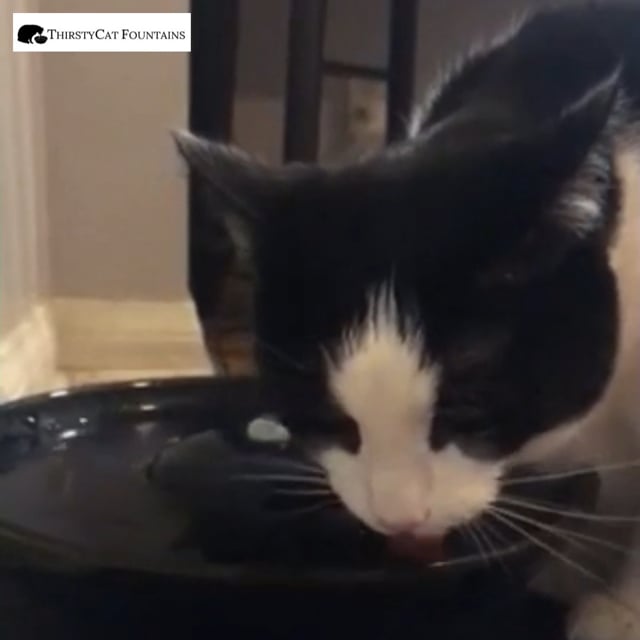



There are very solid reasons why veterinarians recommend cat fountains. Cats crave moving water because in the wild, which cats still very much are, only moving water is safe. Still water is often stagnant, filled with bacteria and can be lethal. Cats are instinctively aware of this. This is why so many seek a dripping tap or want the faucet turned on or they stir their water with their paw or push their water bowl around or drink from the toilet, which often has slight movement of water. They need to see the water moving to want to drink enough. If cats don’t drink enough they become at risk for a variety of serious ailments. (See below).
Although a cat can gain significant water from a wet or raw food diet, nothing is more likely to ensure sufficient water intake than a cat fountain.
Most cats are attracted to the sound and sight of moving water and almost all cats will drink from one if given the opportunity. And water intake is important not only for its hydrating effect.

Most people don’t think of water as a nutrient but none of the nutrients a cat ingests will get to where they need to go without sufficient water, so in a very real sense, cats water intake is at the foundation of all their nutrition. Water also transports oxygen through the blood stream and into the cells, it moisturizes the lungs, regulates body temperature and helps eliminate waste products of metabolism through the kidneys and gastrointestinal tract. Cats’ water intake, when sufficient, contributes to elastic skin and a shiny coat – Signs of good health.

A diminished thirst drive that some cats seem to show may in part be due to having come, evolutionarily, from a desert environment, but more often than not it derives from unattractive water sources, (ie., standing water in a bowl). If fed wet food, cats’ water needs will be much diminished but not entirely and an attractive water source is still advised for cats water intake to be sufficient. If dry food is a cat’s primary diet, a cat water fountain is even more vitally necessary.
There are several kidney and urinary tract diseases to which cats are prone, associated with insufficient water intake. One of the more serious diseases to which cats and other pets are subject is called Urethral Obstruction. Many cats are prone to a blockage in their urethra, the tube that carries urine from the bladder, which can lead to a very serious condition and can, and often does result in a painful death.
The obstruction is a thick, pasty substance called Urethral Plug, or Matrix, but how and why some cats produce it is not known. It is thought that diet is a factor, as can be stress but what is known to prevent the disease is increased water intake. That is also part of the cure.
If there isn’t enough water available, or no attractive sources of water a cat may not drink enough. This leads to a very concentrated urine and it is in this that the matrix tends to develop. Sufficient water intake – ie., a water source to which cats are attracted and from which they’ll drink amply can prevent this. This is the primary role a cat water fountain plays.
Veterinarian Dr. Lynn Bahr of the Cat Clinic in Roswell, GA has this to say: “Instinctually, cats sense that standing water could be contaminated making running water a safer alternative. Moving water is oxygenated and may even taste better. Cats are complicated creatures and not always easy to understand but we do know many don’t drink enough water, especially if fed a dry only diet. Anything that encourages them to drink more and stay properly hydrated will improve their health and water fountains are a great way to entice them to do so.”
Symptoms to be aware of with urinary blockage are:
All of these symptoms and much more can be treated by giving your cat access to clean running water on a daily basis from one of our handmade ceramic cat water fountains. You can browse all of our latest cat fountain designs here.